Chinese decor on the main faces and dragons on the reverse
The main side scenes are surrounded by boxes and the cutting of the screen panels has nothing altered from the highly decorative interest of these panels; however, we notice the continuity of the dragon patterns between the panels that follow one another.
It was common in the 18th century for these screen panels to be cut and "dismantled" and were used in particular in the manufacture of other furniture, in particular for cabinets.
"This type of so-called 'Coromandel' lacquer was created in China around the middle of the 17th century. Their name, that of the eastern coast of India, was given by the English because it was in ports. from this coast that these lacquers, exported from China to Europe in the 17th and 18th centuries, were transhipped from Chinese junks onto the ships of the companies of the Indies. height and two feet in width for each leaf. Originally, they were gifts given in China to high dignitaries. They became export items from Kangxi's reign, and were very popular in Europe. between them were moreover dismembered on their arrival and cut into panels to adorn dressers. The technique inaugurates a new mode of decoration. The wood is covered with a fine fabric, maintained by a coating of vegetable glue and pulverized schist, self generously flattened. The plain lacquer, almost always black, sometimes brown and more rarely red, is then applied in successive layers reaching about 3 millimeters in thickness. The decoration, surrounded by deep incisions and hollow modeled, is then painted using matt colored pigments, green, red, blue and white, often accompanied by gold, which contrast with the gloss of the lacquer. The most beautiful screens, sometimes dated, feature vast scenes animated with figures or large-scale landscapes. They occupy the entire surface, with the exception of wide borders decorated, in general, with auspicious symbols "
4 panels of identical sizes 43 * 34cm and a 5th 39 * 38cm
Very good condition. The panels have been encased in gilded wood frames - rounded slant



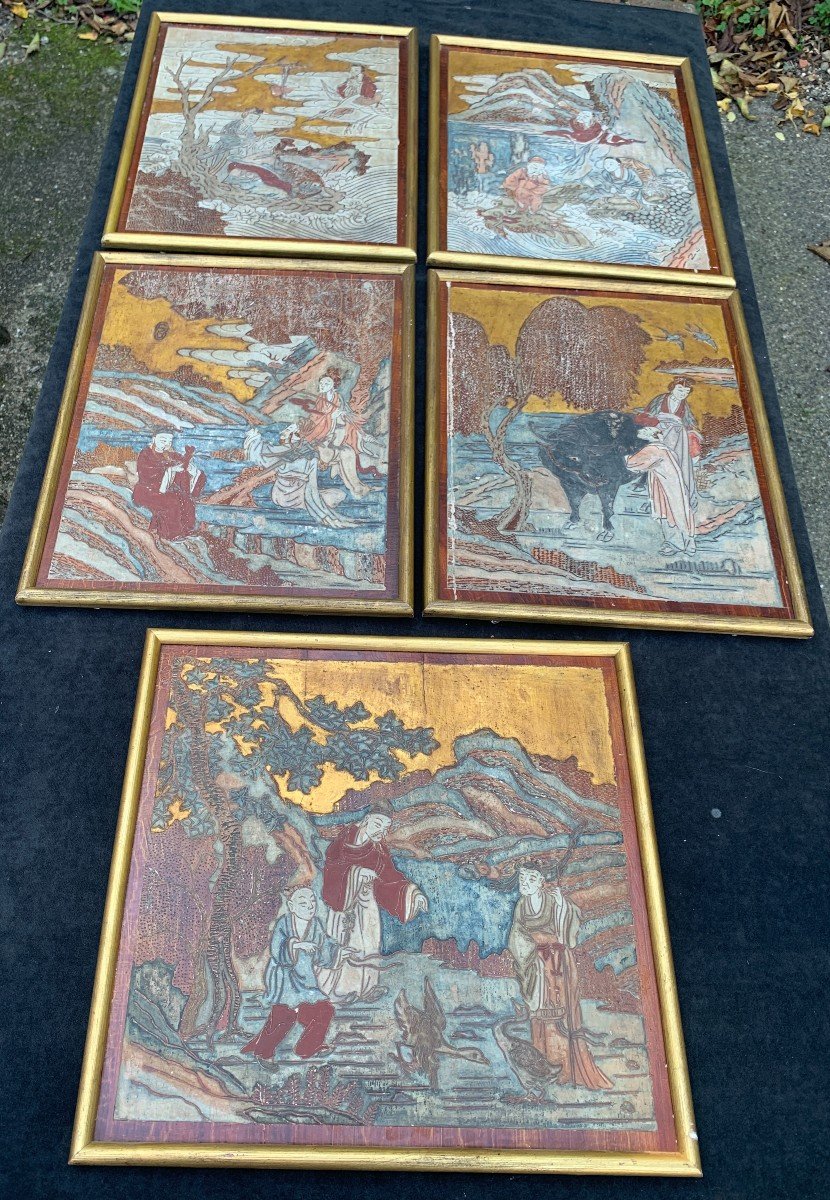
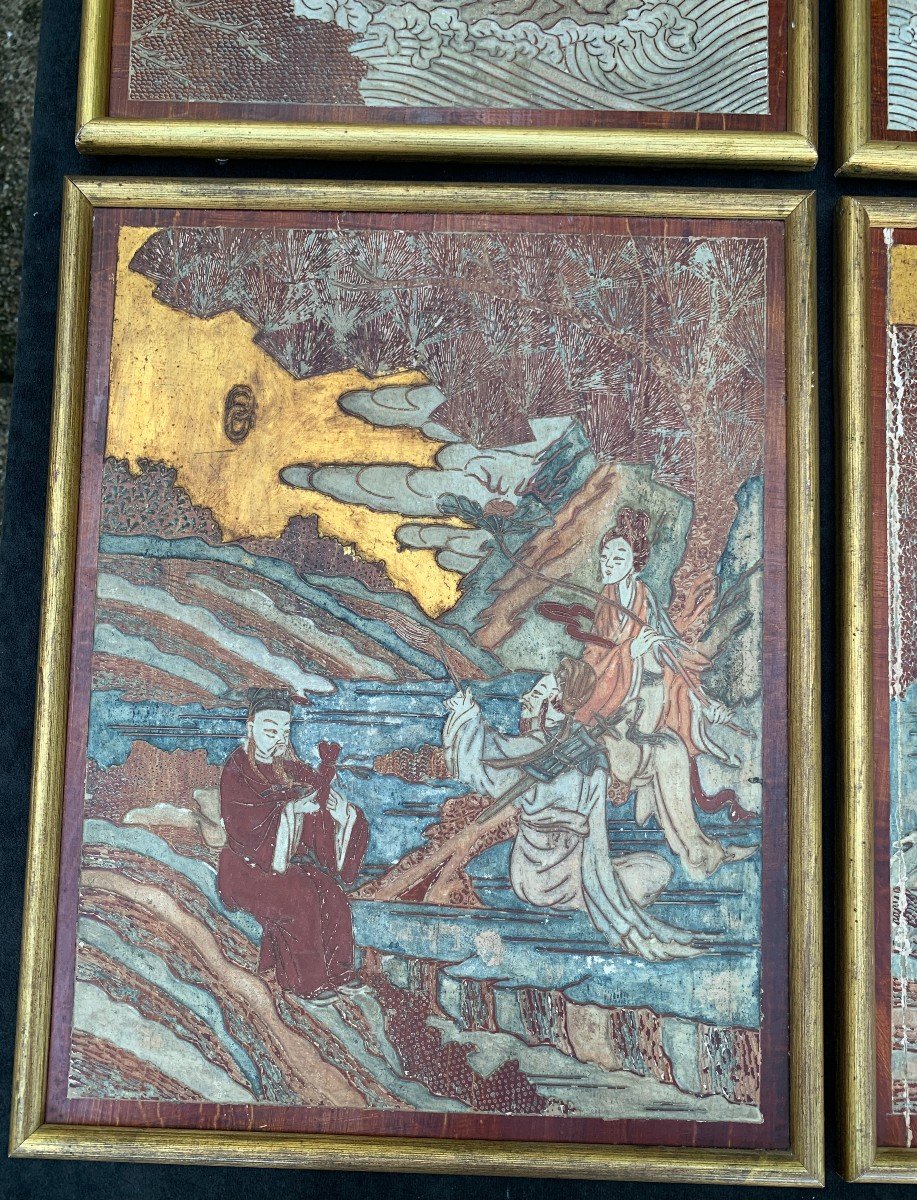
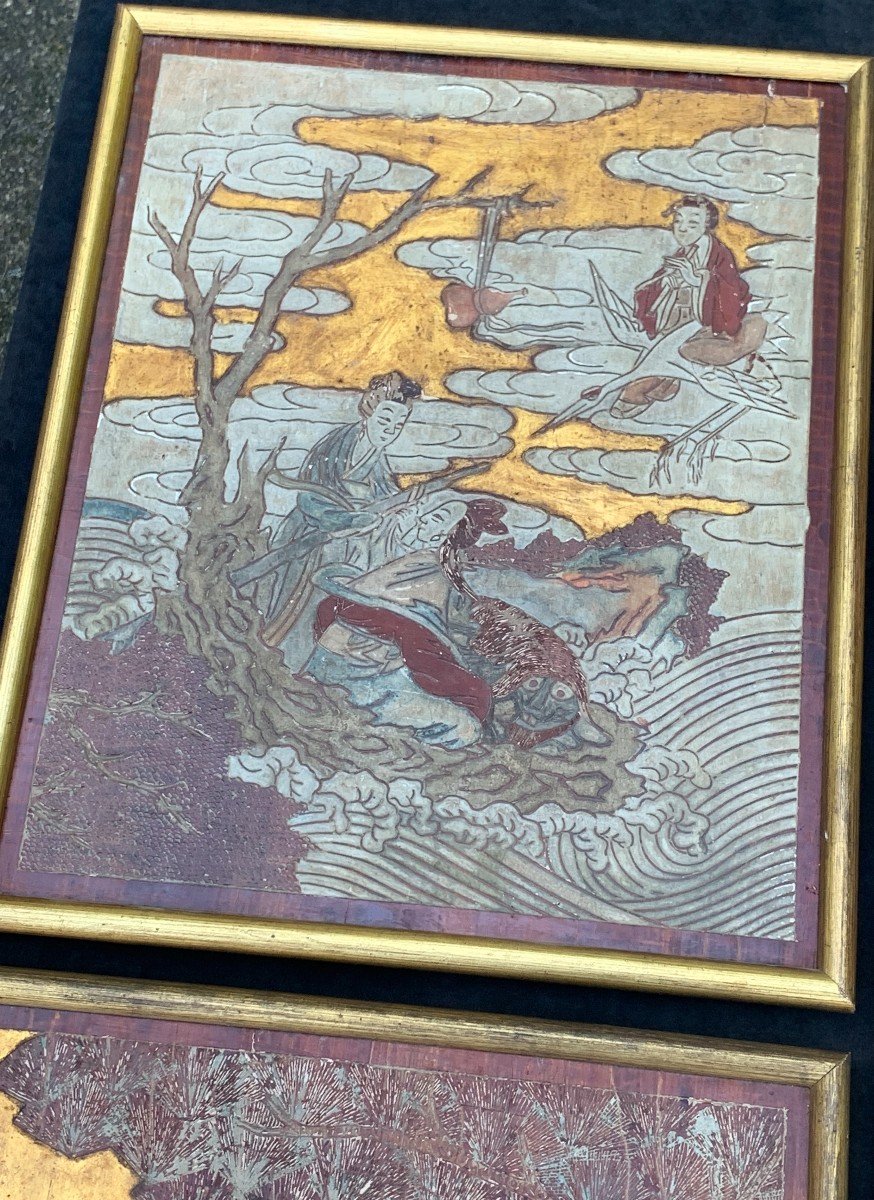












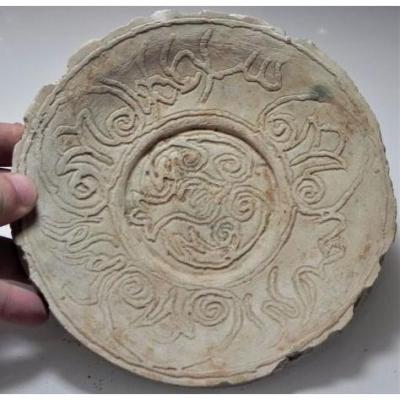
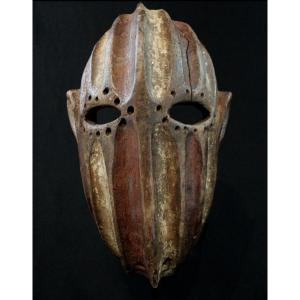

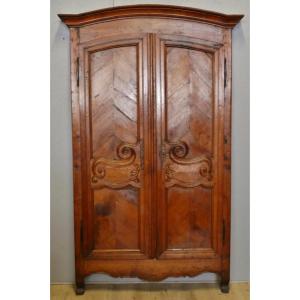
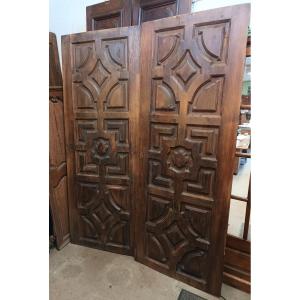

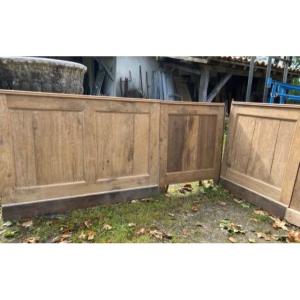





 Le Magazine de PROANTIC
Le Magazine de PROANTIC TRÉSORS Magazine
TRÉSORS Magazine Rivista Artiquariato
Rivista Artiquariato
